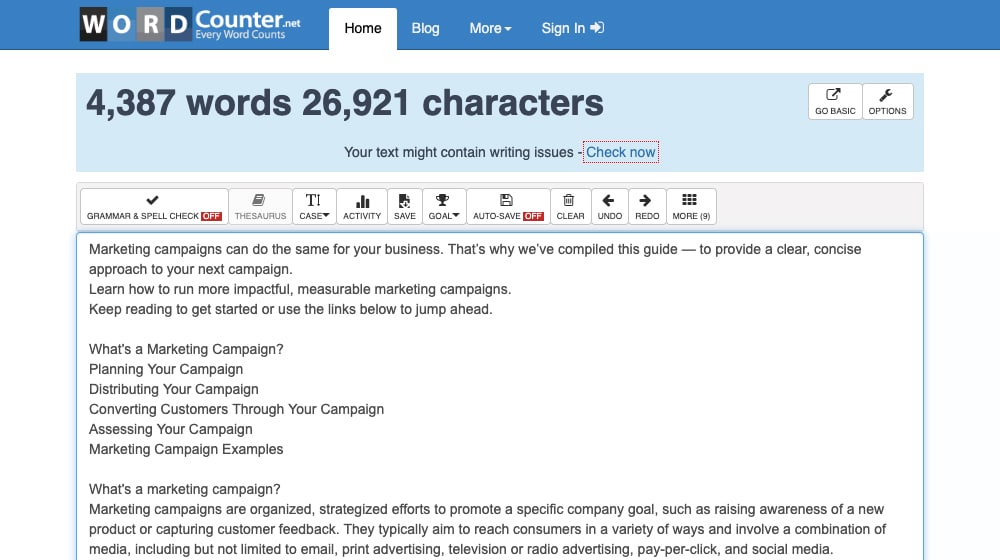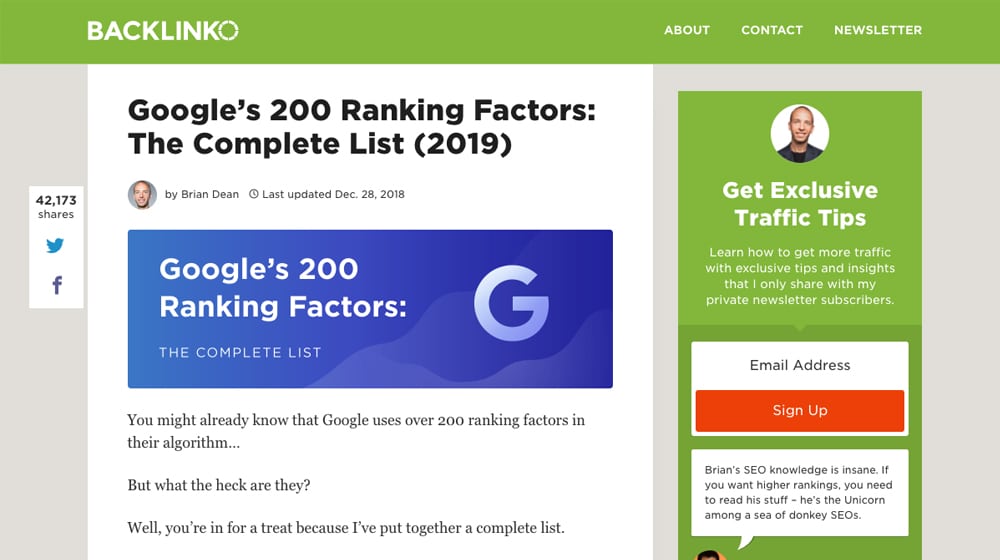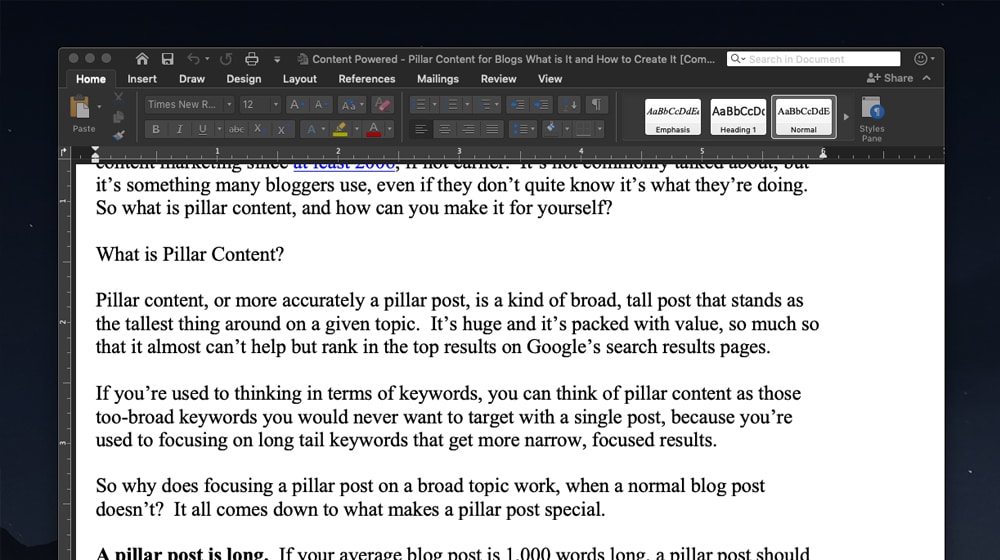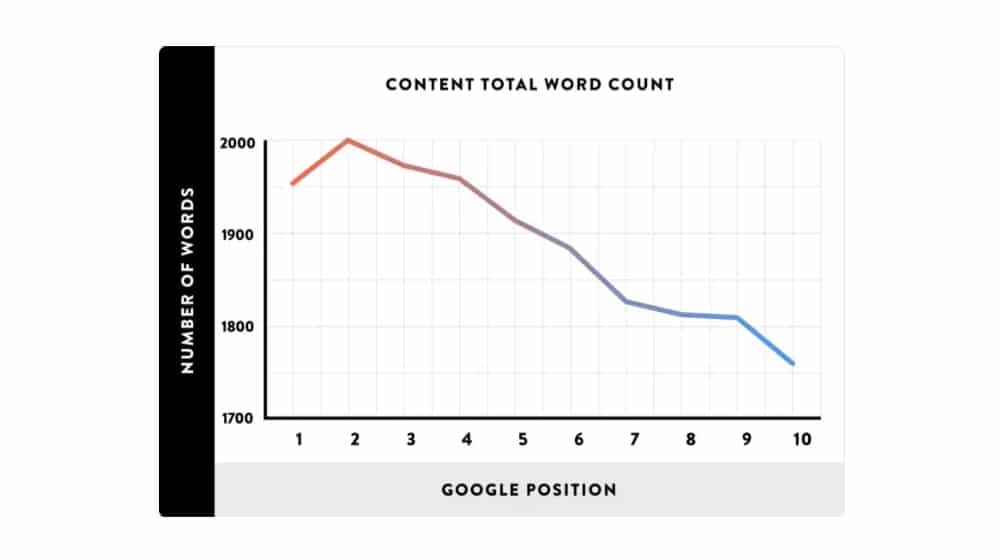Pillar Content for Blogs: What Is It and How to Create It

Pillar content, also called cornerstone content, is a term that has been thrown around in content marketing since at least 2006, if not earlier.
It's not commonly talked about, but it's something many bloggers use, even if they don't quite know it's what they're doing.
So what is a pillar post, and how can you create one for yourself?
What Is a Pillar Post?
It's vast, and it's packed with value, so much so that it almost can't help but rank in the top results on Google's search results pages.

If you're used to thinking in terms of keywords, you can think of pillar content as those too-broad keywords you would never want to target with a single post because you're used to focusing on long-tail keywords that get more narrow and focused results.
So why does focusing a pillar blog post on a broad topic work when a regular blog post doesn't? It all comes down to what makes a pillar post special. I've identified six things:
1. A pillar post is long. If your average blog post is 1,000 words long, a pillar post should be at least 2,500. If your average blog post is 2,000 words long, a pillar post should be 4,000 or more. I've seen pillar posts that end up looking like small eBooks or ultimate guides instead, and that's perfectly fine.

2. A pillar post is broad. You don't want to go too broad with it, of course. Writing one particular post on "social media marketing" is far too broad and too varied to be a pillar post. You could consider breaking that topic cluster into several posts to form cluster content. Conversely, a post on "retweet marketing" is too narrow to make a good pillar. You can find "Twitter marketing" somewhere in the middle and make that your pillar post. Why do you want it to be so broad? Because:
3. A pillar post is a hub. A pillar post covers a topic in broad detail, but it doesn't dig deep into every single sub-sub-topic. A Twitter marketing post will cover in broad strokes topics like the different types of retweets, using Twitter ads, Twitter trends, reply etiquette, Twitter's new kinds of reply restrictions, and so on. Any topic related to Twitter marketing you can think of can have a paragraph in your pillar post dedicated to it. Possibly even several paragraphs!
You can think of a pillar post like the hub in the middle of a wheel. That hub is connected to the outer wheel with spokes. Those spokes are your narrow, long-tail keyword-targeted blog posts. Each of those topics, covered in the pillar post in a few short paragraphs? Somewhere in that paragraph is a hyperlink to a blog post you write, covering the topic in greater detail.
4. A pillar post is kept up to date. You want your pillar post to be a hub of value and knowledge. That means keeping it up to date. For example, if I had an old post about tips on writing a tweet in 140 characters, that post is no longer relevant since Twitter increased their character limit to 280. This change presents me with a choice: do I update the old post, write a new post, or remove the topic from the pillar post?
The third option is rarely the best. Usually, it's a good idea to write new quality content on the topic. If the old post has a lot of links and organic traffic, though, it might be a better idea to update it instead.
5. Pillar content is better. Rand Fishkin from Moz also calls this type of content "10x content" because it's "content that's 10x better than the highest-ranking result for a given keyword."

As such, pillar content requires you to be aware of what already exists in that space. You're creating a real ultimate guide, a truly comprehensive resource, and to do that; you need to know what already exists out there. You need to find holes in information and provide that information.
6. Pillar posts are often competitive. When you consider item #2 that I listed above (pillar posts are on broad subjects), these queries return a ton of results, and the broader the subject, the more in-depth they are. For example, if you search for "how to set up an aquarium", that's a massive topic; products, cleaning, filters, air pumps, decor, size, and so on. Lots of aquarium businesses have already written massive guides on the subject, and it will be hard to compete. If you search for "what size of aquarium do you need for a turtle", that's much more specific and less broad, which usually means it will be less competitive and have fewer competing results.
Now You're Thinking with Topics
One of the keys to creating good pillar content is thinking about topics rather than keywords. I've been a proponent of this for a while, and marketers are slowly coming around to this process.
Neil Patel is another herald of the concept, having written posts like Why You Shouldn't Do Keyword Research for Your Blog Posts espousing the idea.

So what do I mean? Think about how you use search engines as a casual user. When you look for something, are you thinking about the keyword you need to type in to find the information you want? Probably, because you're a marketer. However, ordinary people don't have the first clue of how SEO works. All they know is they can ask Google a question and get an answer.
It used to be that using Google Search took a certain amount of developed skill. You had to know how to formulate a query the right way, so the Google robots could understand it and give you the correct information.
From the digital marketing and optimization side of things, you had to guess what kind of query the user would formulate to find information and target that specific query – those keywords – with your content.
Google has spent a lot of time and effort over the last decade trying to provide this service to users in a better, more relaxed way. Many users experienced frustration when the queries they typed in never seemed to get the correct answers.
Google's updates with machine learning and semantic parsing have all but eliminated the need to care about specific query formulas. Semantic Search allows Google to use context to serve more accurate results. BERT further optimizes this. Meanwhile, it's easier than ever for users to ask Google a plain-language question through a helper like Google Home and get accurate results.
Perform your keyword research. Don't get me wrong; keywords are still helpful to guide your content creation. You still get to see the actual kinds of queries people are using to find content and can use that knowledge to improve your content.
Pillar content is meant to focus on the entire, broad topic and be such a good resource for everything related to that topic that it can't fail. However, you don't want to limit yourself to specific keywords when creating pillar content. Pillar posts will get website traffic from thousands of ranking keywords. You're not going to be focused enough on any single keyword to rank well for it alone.
Examples of Pillar Content
Want to see pillar content in action? It's not very impressive. The reason, of course, is because you see it every day, even if you don't recognize it for what it is.
WebMD is one massive example of pillar content done well. Every time you search for any medical term or disease, you're going to find a WebMD piece of pillar content on the subject.

Let's use "gum disease" as an example. Suppose I told you to write a piece of content about gum disease. In that case, you might go through the keyword research process and decide that, say, you should write a blog post about the symptoms of gum disease, or the treatments for gum disease, or the differences between gum disease and gingivitis. You think those three different articles, with narrow audiences but focused results.
Here's their example: the WebMD page for gum disease.
This article covers the difference between gum disease and gingivitis, the causes and symptoms of gum disease, how it's diagnosed and treated, how you can prevent it, and other concerns you may have about the disease—all in one post.
WebMD has a ton of content on their site that is not this kind of pillar content, but you know what? Unless you browse through their site, you might not ever see it. Pillar content dominates the search results. It has some competition from websites like Healthline doing the same thing, but narrower web pages never make the cut.
As a more marketing-focused example, look at Brian Dean's post on Backlino titled Google's 200 ranking factors.

This article is a substantial top-level guide. It covers everything you could ever want to know about Google's search ranking factors, both the algorithm factors that Google tells us about and the ones that we only know about through experimentation and data monitoring. The thing is, every single factor on that list has a couple of sentences at most describing it.
The trick is, most of those factors also have an internal link in them that leads to a post on the subject, dedicated to that one search ranking factor. Some of those links are to Backlinko content, but many of them are to other high-ranking sites or first-party sources, like Google themselves.
This broad coverage means that if you have any questions at all about any search ranking factor, this post is probably going to show up. Competing articles might have better information about that specific factor. Still, this post will appear somewhere because it has so much overall value that it's still valuable even if the keyword is only a passing mention.
How to Create Your Own Pillar Content
Pillar content is an excellent SEO strategy for ranking in the SERPs, but it also seems like a ton of work. How can you do it yourself? Well, you're right about one thing; it's a lot of work.
1. Start with topic ideation. I like the spiderweb or snowflake method of brainstorming ideas if you're familiar with those concepts. You start with your core industry in a bubble, something like "marketing" in broad strokes. Then you create tier 2 topics within that specific topic, like "content marketing," "paid marketing," "email list building," "email marketing," and "social media marketing." Then you pick one of those and spin it off into tier 3 topics. Social media marketing becomes "Facebook marketing" and "Twitter marketing" and "Instagram marketing" and so on.

Tier 3 is about where you're getting narrow enough to be pillar content but not so narrow that you can't find enough sub-topics to write about. Depending on your starting point, you may go another tier or two more profound, or maybe not quite so resounding. For example, a business that specializes 100% in social media marketing might go deeper for a piece of pillar content.
The key to picking this kind of topic is fourfold. It should be:
- Only 2-4 words long. The more words you need to describe it, the narrower it is and the less suited to pillar content.
- Specific to your industry. You want your pillar content to be relevant to your expertise.
- Educational. Pillar content is rarely a direct tutorial; instead, it's a hub resource for other content.
- Relevant to your business. Your pillar content is attracting users to your website, so you need to do something with that target audience.
So let's say I picked "Twitter marketing" as my core concept for the pillar post. Now I need to generate sub-topic ideas and sub-sub ideas, and so on down the line. You can add anything worth mentioning here. It can be broader overview topics, like "how to use Twitter ads," or it can be narrow questions a user might ask, like "what does RT mean?"

You can do this with just brainstorming, but this is also where keyword research comes into play. It's always a good idea to know which topics your audience is looking for, even if you don't end up using the exact specific keyword phrases.
Remember, pillar posts need to be long-form content. It's going above and beyond your average blog post length. The more sub-topics you can brainstorm, the better off you'll be because the less you need to write in your pillar post to cover everything and end up with a longer post.
2. Decide how you-centric the pillar post should be. I've shown you two examples of the two extremes up above. The WebMD example is almost entirely self-contained. Every link in their pillar posts is to another WebMD post unless directly to an authoritative source for essential medical information. Conversely, the Backlinko post links to various beginner's guides, articles, and references, with very few other backlinks to Backlinko itself.
Call it about a 50/50 split between internal and external links. I prefer somewhere in the middle. I will happily acknowledge when someone else has written content on a better topic than what I have or covers a segment of the subject I haven't covered before. I'll link to them, and then I'll get to work out-performing them with a better version of that topic.
The more you-centric you want your pillar post to be, the more blog content you need to write to link to within it. If you don't already have a substantial blog with content already written on those subjects, you're going to need to take the time and get to work.
3. Get to work creating content. My general process looks like this:
- Start building the broad outline of the pillar post. Just write down the headline, subheadings, and topics in each section. This information doesn't need to be detailed; it's just here to guide you and help you create flow and structure of your pillar articles.
- Look for any content you've already written and published on that topic. This process includes both your domain and others, such as writing a good guide you published as a guest post.
- Look for any top-tier content already existing for the topics you haven't already covered. If there are posts out there you don't think you can out-do, go ahead and resign yourself to linking to them for now. You can always try to write your version later.
- Start filling in the gaps. You can write a post to cover any topic you haven't covered and that you don't find existing great content for. Publish that post and link to it in your pillar post outline.
- Flesh out the pillar post outline. For sections where you don't have a link yet, spend a little more time writing about it. You can retroactively add the link later.
- Consider adding extra value. Pillar posts can have dedicated videos, infographics, a podcast, or other forms of multimedia to enrich your article. This additional work improves your user experience and makes your post more linkable and shareable.
This kind of "The Ultimate Guide to X" post makes for a powerful lead magnet. Now, you can see why creating a good pillar post takes so much time, eh?

4. Publish and promote your pillar post. Publishing it is easy, but you want to make sure you're optimizing it as much as you can for the overall topic. Focus on creating a compelling headline, an optimized and well-written set of metadata, and so on. You'll get bonus points for making it a unique URL that's not part of your blog, so it's easy and memorable.
Promoting your pillar post will be an ongoing project. You want to link to it anywhere you can. This high-quality page is a massive piece of content, an emblem of what your company can produce. Consider placing a CTA for the post in your other articles to create a strong internal link structure. Try giving it a special button in your navigation, link to it in guest posts and on social media, do anything you can to keep it circulating. You don't need it to go viral, but you do need it to be there, waiting, watching, all the time.
5. Keep it evolving and growing. This process is the key to a good pillar post; it's never truly complete. New industry news? Add a relevant section to your pillar post. Old topic changes and is no longer valid? Update the old post – or write a new one – and edit the relevant section in your pillar post. Think of a new topic you want to cover? Add a new area. Make sure to update the post occasionally to keep a "last edited" date within the last few months at all times.
The Advantages of Creating Pillar Posts
While you may understand the fundamentals of pillar content creation, there are many reasons why it's a valuable component of your content marketing strategy that is yet to be explored.
This potent strategy, well-equipped to combat algorithm changes and user behavior modifications, is a fantastic asset for your digital strategy.
1. Boosts SEO: Pillar content is essentially a "jack of all trades" regarding search engine optimization. Providing comprehensive, high-quality content on a broad subject satisfies Google's demand for relevance and depth. As pillar posts attract backlinks and social shares, they increase your site's authority in search engine's eyes. Moreover, the intricate internal linking structure ensures that Google crawls all your interconnected pages, boosting overall SEO.

2. Increased User Engagement: Quality pillar content is informative and engaging, encouraging users to spend more time on your site. This increased dwell time signals to search engines that your site provides valuable information, leading to better rankings.
3. Sustains Evergreen Relevance: Pillar content is designed to remain timeless and continually relevant. It covers broad topics that always hold relevance in your industry, giving it a longer lifespan than trend-based content. By updating it with the latest information, you can keep your pillar content fresh and perpetually beneficial to your readers. This is the foundation of evergreen content.
4. Encourages Backlinking: The sheer value provided by pillar posts makes them an excellent resource for other sites to link to. These inbound links, or backlinks, improve your domain authority, which in turn can boost your site's visibility on search engine results pages.
5. Powers Content Repurposing: The expansive nature of pillar content lends itself to repurposing. A single pillar post can be broken down into several smaller blog posts, social media updates, infographics, podcasts, slideshares, or even a webinar series. This repurposing can extend the reach of your content and appeal to different audience segments.
6. Facilitates Topic Authority: One of the best advantages of pillar content is its ability to establish you as an authority on a particular topic. By providing comprehensive, expert-level content on a given topic, you demonstrate your credibility and build trust with your audience, further increasing your brand's reputation and visibility.
7. Increases Organic Traffic: Pillar content can significantly boost your organic traffic when implemented effectively. By covering a topic extensively, your pillar post can rank for many relevant keywords, attracting more search traffic to your site.
All these benefits underscore the importance of pillar content in your overall content marketing strategy. When executed right, it is a long-term investment that can significantly enhance your online presence, increase organic traffic, and establish your brand as an industry leader. By putting in the time and effort to create these comprehensive guides, you're not just making a resource for your audience but building a foundation for your content marketing efforts. Remember, successful pillar content creation is a marathon, not a sprint, and will pay dividends in the long run.
And that, my friends, is how you make a killer pillar!










November 03, 2020
Thank you for sharing this. I would love to have a pillar content on my blog but I don't know how to start. This is a good guide.
November 09, 2020
Hi Enid, thanks for your kind words!
January 18, 2022
Hey James,
it's a great and a very useful content with lots of value, especially for a beginner. 🙂
Thanks for sharing, I can't wait to learn from you more.
Mira
January 19, 2022
Thanks Mira! Very kind, I'm glad it was useful to you.
February 03, 2023
Thank you for the blog post about pillar content.
February 03, 2023
Hey John, thanks for your comment! You're very welcome 🙂